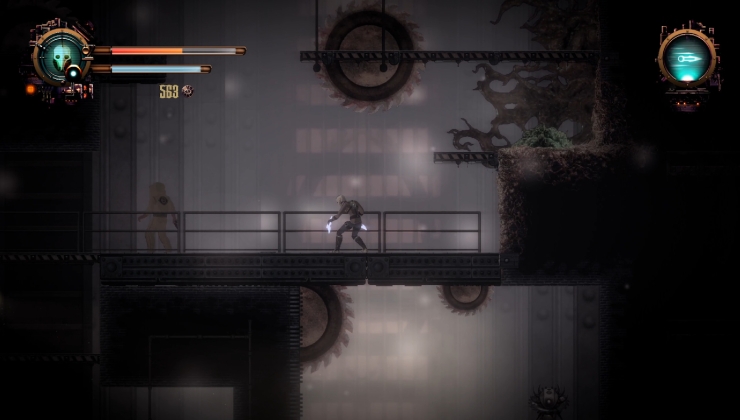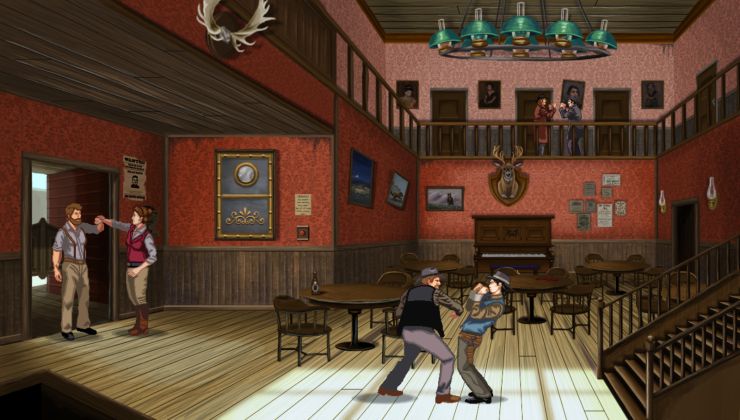NVIDIA has released the 535.43.02 Beta driver for Linux today, bringing with it support for multiple newer Vulkan extensions and extends Wayland support further.
The new Vulkan extensions support on Turing+ GPUs:
Other extensions now supported:
For Wayland the NVIDIA driver now supports version 4 of the DMA-BUF Wayland protocol, plus there's a Wayland fix for a bug that prevented PRIME render offload from working for Wayland applications when running on a system with an AMD iGPU.
This driver release also improves performance of Minecraft Java Edition on RTX 3000 series GPUs, adds support for driving very high pixel clock mode timings such as 8K @ 60Hz, extends Dynamic Boost support on notebooks to include older Renoir and Cezanne chipsets, adds nvoptix.bin to the driver package used with the OptiX ray tracing engine library and now support for suspend and resume when using GSP firmware.
All the other improvements and bug fixes:
- Fixed a memory leak in the NVIDIA GLX driver, as reported at: https://forums.developer.nvidia.com/t/222697
- Fixed a bug that caused Vulkan X11 swapchain creation to fail on GPUs without a display engine when the VK_KHR_present_id extension is used.
- Fixed console restore on legacy VGA consoles when using the NVIDIA Open GPU Kernel Modules.
- Removed libnvidia-compiler.so.VERSION from the driver package. This functionality is now provided by other driver libraries.
- Added power usage and power limits information to nvidia-settings PowerMizer page.
- Updated NV_CTRL_GPU_POWER_SOURCE NV-CONTROL API to report undersized power source.
- Added NV-CONTROL attributes NV_CTRL_FRAMELOCK_MULTIPLY_DIVIDE_MODE and NV_CTRL_FRAMELOCK_MULTIPLY_DIVIDE_VALUE to allow syncing a Quadro Sync II card to different House Sync signal rates. This feature requires firmware version 2.18 or later.
- Added an application profile to avoid performance problems in Xfce 4 when the OpenGL compositor backend is enabled along with G-SYNC.
- Moved the nvidia-settings application icon into the 'hicolor' icon theme, which allows it to be customized by other icon themes selected in the desktop environment.
- Fixed a bug that prevented nvidia-installer from recording kernel log output to the installer log in some module loading failure paths.
- Changed nvidia-installer to no longer use the $XDG_DATA_DIRS environment variable. XDG data files are now installed to a path specified by the --xdg-data-dir option, or /usr/share if not specified.
- This fixes a problem when Flatpak is installed that caused the installer to place the nvidia-settings.desktop file in /root/.local/share/flatpak/exports/share/applications.
- Changed the behavior of glXGetRefreshRateSGI() for non-integer refresh rates to round to the nearest whole number rather than truncating.
- Changed the compression format of the .run installer package from xz to zstd. This results in a smaller compressed package, and faster decompression performance. A fallback zstd decompressor is embedded into the installer package for systems which do not already have a zstd decompression program installed.
- Fixed a bug that caused nvidia-installer to mistakenly unload some already loaded non-NVIDIA kernel modules.
- Fixed a bug which caused incorrect reporting of presentation times when using the VK_NV_present_barrier Vulkan extension.
Last edited by const on 30 May 2023 at 3:57 pm UTC
Wonder how much wayland is actually improved. When I tried it here last week, things were flickering, maximized windows were not aligned with the screen borders, strange artifacts happened all the time. Firefox on that setup could introduce epilepsy. It was really really unpleasant. (980TI, 3 monitors, KDE)
I guess it will take several years from now for nvidia to be on paar with AMD and Intel when it comes to Waylandsupport given that desktoplinux has no priority. That is also true for AND and Intel where the linuxdrivers still leave much to desire. However AMD and Intel added Waylandsupport early on instead of beeing part of the factors that where passively "blocking" it's development. Since the drivers are mainly opensource the developers of desktopenvironments and compositors could addjust there implementations of Wayland to the drivers.
I simply stopped using Steam (gestures were more important to me than the occasional PC game, especially since I am fortunate enough to own a Steam Deck.) and eventually started using a different machine altogether.
I haven't checked it out in ~3 months but I imagine support for an RTX 20XX card has improved drastically. :)
If at all it's taken place yet 😆






 30 May 2023
30 May 2023



 How to set, change and reset your SteamOS / Steam Deck desktop sudo password
How to set, change and reset your SteamOS / Steam Deck desktop sudo password How to set up Decky Loader on Steam Deck / SteamOS for easy plugins
How to set up Decky Loader on Steam Deck / SteamOS for easy plugins
See more from me